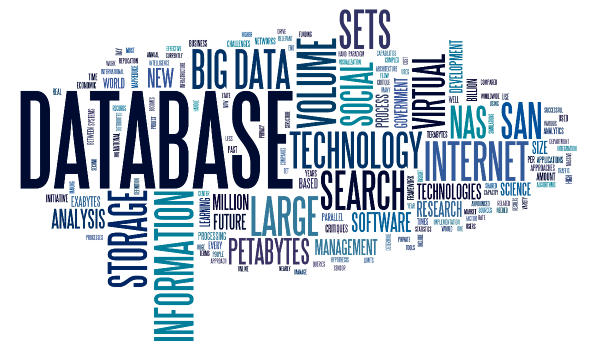How to Write Mobile App Requirements that Bring Clarity to Confusion
So, you have this great idea regarding a mobile app project and you think that it will be a big hit. But you only end up having an application that...
4 min read
Sales : Aug 25, 2017 12:00:00 AM

Are you planning to develop a web application? But you are not sure how to plan the web app development. It sounds simple to come up with an idea and implement it successfully but there are a number of complications involved. The web development cycle starts with the planning and then systematically moves to design, development, security check and final launch. If the first step goes wrong then the entire process becomes shaky. It is important to plan web app ideas in advance to avoid any confusions, streamline development efforts and get better final results. Though web development sounds like a 5 step approach, it is a much more detailed process. Planning web app ideas itself consists of a number of steps and accordingly the design, development and other stages are executed based on the plan. Thus, planning web app ideas becomes the base of all the efforts that you put into development.
The first step is obviously the most basic one. If you are reading this article you might already have a basic idea in mind. But is that enough? Your idea about the web app needs to be highly specific. It should aim to solve a specific problem or perform a specific set of functions.
Example of an incomplete web app idea:
I want to develop a to-do list app.
What it looks like if it is specific?
I want to develop a to-do list app that allows the user to create a list of tasks, cross each task when they are completed and set priorities for tasks using color coding.
The next stage is market validation. It is important that you validate your idea before getting further into development. Creating a successful web app for an overly competitive market or dead market turns out to be a very difficult challenge. Market validation ideally happens in two stages. The first market research happens before getting into too many details of development. Here you validate the need, identify customer pain points and analyze your competitors. The second step involves launching your web app in the market with the most basic model possible. This approach is popularly identified as the MVP approach to development.
Read More: Prioritizing Web App Features Based on it's Users
If you are creating a web app to solve an internal company issue then you need to estimate the ROI (Return on Investment) of the application and figure out alternative solutions to the problem. If there is already a solution available for the concerned issue then you should evaluate the pros and cons of developing your own app vs. using a pre-built solution.

Developing powerful web applications is a fairly costly process particularly if you are not a developer. It involves costs like website domain, hosting, design, and most importantly the development process itself. You need the budget to support your idea. If you have a very small budget then it is best to get a minimum viable product developed that depicts your overall thought and then approach someone for the funding.
If your company has an in-house IT team that is capable of executing your idea then it is an obvious choice to go for in-house development. What if you are not a developer yourself and you don’t have an in-house IT team yet? This is where you need to make a choice between building your own IT team from scratch or outsourcing the development. Here the best option is to outsource initial development efforts to save the cost incurred on recruitment and training. Once you have started generating good ROI from your app you can ideally weigh the costs involved in handing over maintenance to third-party vendors or bring expert developers in-house.

Here I clearly don’t intend to focus on core UI development. Design in the planning stage only implies to a rough idea of how the application would look like. Every web application has a main dashboard that provides maximum functionality to the user. An ideal web app plan would depict one primary window that communicates all the important features to the user. From this window, the user can perform maximum tasks on his end. Ideally, you should only have one primary window for a small or mid-size application. Even for big applications like CRMs and ERPs the number of primary windows should not exceed by 3.
These frameworks and languages bring out usability and functionality in your web application. Thus, it is very important to choose this set wisely. If done improperly you will need to incur significant costs for migrating from one tech stack to another. It is best to take expert advice while planning the technology stack for your web application. If you are planning to outsource then you should have clarity about your requirements, technology is best figured out by the developers. Ideally, the stack should be based on the availability of developers, suitability of the language and the requirements of the application itself.
Here is the technology stack of Quora (for reference):
.png?width=560&name=a%20(1).png)
7. Documenting You Web App Plan:
Now that we have covered most of the thoughts go into planning a web application now comes the process of putting them on paper. Every goal you want to achieve should be segregated into smaller doable steps and work should be started accordingly. Then you need to set the timeline for each task that needs to be completed. The decision of timeline should not only be based on your requirements but also on the capabilities and number of developers. Here is a sample layout that you can use to document the plan of your web application:
Milestone- 1:
Start Date : mm/dd/yyyy
End Date : mm/dd/yyyy
Functionality-1 :<Describe your functionality>
Time Taken: in hours
Functionality-2 :<Describe your functionality>
Time Taken: in hours
……..and so on till milestone n
Milestone- n:
Start Date : mm/dd/yyyy
End Date : mm/dd/yyyy
Functionality-1 :<Describe your functionality>
Time Taken: in hours
Functionality-2 :<Describe your functionality>
Time Taken: in hours
If you are looking for experts to bring your idea into action then you are right where you need to be. NewGenApps is a company with 9+ years of experience in developing mobile and web applications. Just hit the contact button see your idea into a final product.

So, you have this great idea regarding a mobile app project and you think that it will be a big hit. But you only end up having an application that...

Getting an idea to develop a stunning app has been a dream of many enthusiasts. Though there are millions of apps already on the app store, there is...

Why use a database for mobile applications? It is basically responsible for keeping all the user information and making them available at the right...